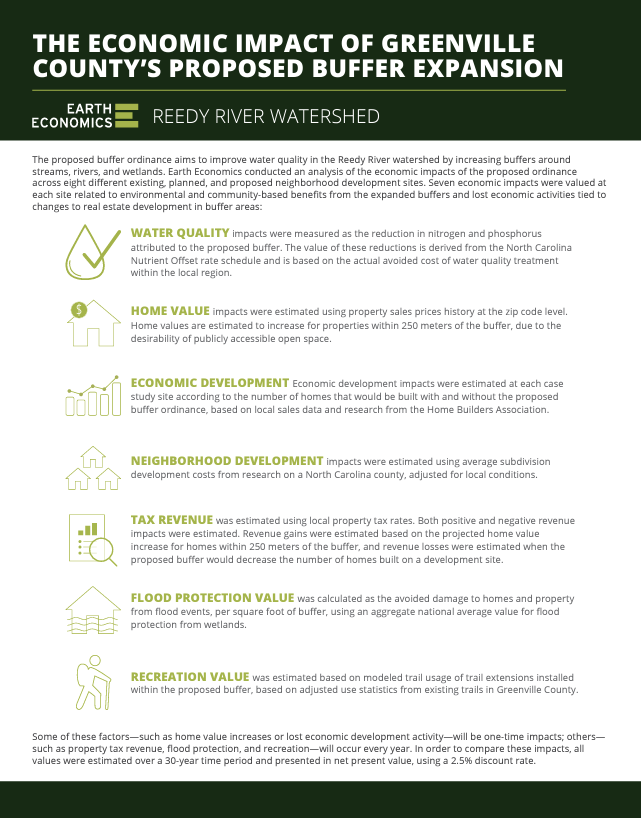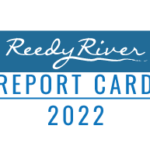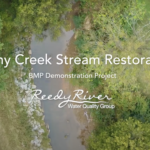Earth Economics conducted an economic impact analysis of a proposed riparian buffer ordinance in Greenville County across eight different sites, which included existing, planned, and proposed neighborhood developments. Overall, the economic benefits were found to exceed the costs. See the Fact Sheet from the Economic Impact study here.
Zoning to Protect Riparian Buffers
The Greenville County Comprehensive Plan adopted in early 2020 also supports requiring stream buffers “sufficient to protect water quality, streambank integrity, and wildlife habitat.”[1]
The most significant estimated costs in the Earth Economics study were related to lost economic activity associated with development, primarily due to reduced lot yield resulting from the combination of minimum lot size requirements and larger, undisturbed riparian buffers.
These costs could potentially be mitigated by reducing or eliminating minimum lot size requirements where sewer is planned and/or higher gross densities are called for in the Greenville County Comprehensive Plan. Reduced building setbacks could help to avoid non-buildable lots.
An EPA study comparing the water quality impacts of low and high-density development demonstrated that higher-density development generates less stormwater runoff and less impervious surface than low-density development (for the same amount of growth).[2] Suburban-style, low-density single-family residential zoning is usually characterized by large lots with lawns that have been compacted from construction activities, which act as impervious surfaces, leading to increases in nutrient pollution from runoff.[3],[4] In addition to nutrient runoff from fertilized lawns, single-family residential developments can also contribute to increased stormwater runoff associated with offsite infrastructure supporting these sites, such as roads and parking lots.
The EPA study recommended increasing development densities as one strategy for minimizing regional water quality impacts, with the caveat that to fully protect water quality, a wider range of land use strategies is needed – including preserving buffer areas, incorporating adequate open space, and minimizing land disturbance. Confirmed by the Earth Economics study, riparian buffers are the most cost-effective way to reduce nutrient loading from runoff. Zoning requirements not based on the minimum lot size of the parcel can support the implementation of a riparian buffer requirement without affecting development yield.
Greenville County is in the process of developing a new Unified Development Ordinance (UDO) that will replace current zoning and land development regulations. The Reedy River Water Quality Group (RRWQG) supports a land development framework that promotes riparian buffers, water quality improvements, and economic viability for the entire Greenville County.
Footnotes:
[1] Plan Greenville County Comprehensive Plan, October 2019. https://www.greenvillecounty.org/apps/ComprehensivePlanBlog/Blog.aspx, pg. 138.
[2] EPA, 2006. Protecting Water Resources with Higher-Density Development, https://www.epa.gov/sites/production/files/2014-03/documents/protect_water_higher_density1.pdf
[3] Schueler, Tom. 1995. “The Peculiarities of Perviousness.” Watershed Protection Techniques.
[4] Schueler, Tom. 2000. “The Compaction of Urban Soil.” Techniques for Watershed Protection. Ellicott City, MD: Center for Watershed Protection.





